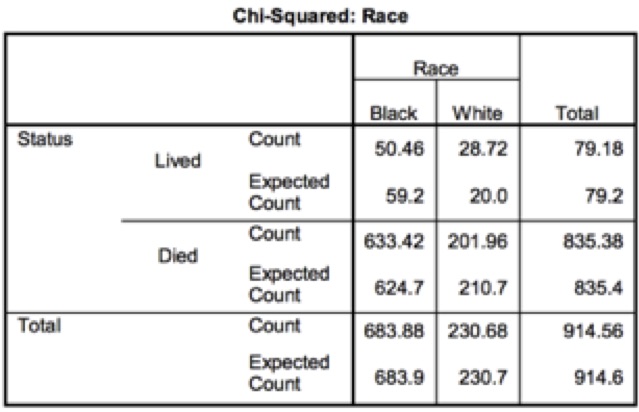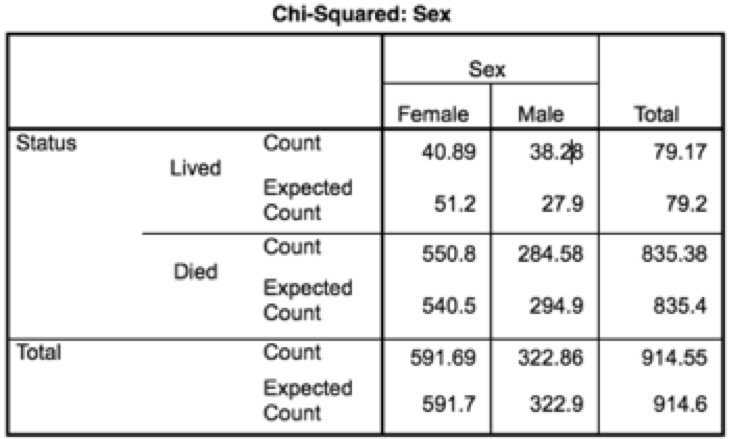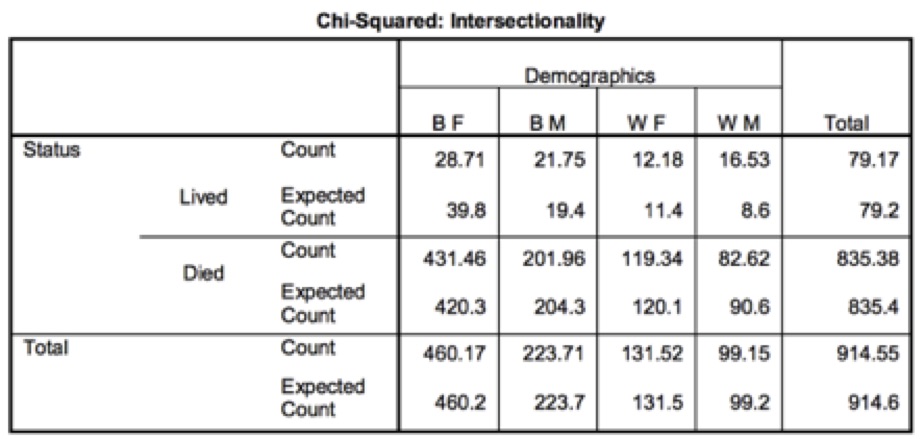Introduction
Many scholars have spent a great deal of time researching various religious movements with the goal of understanding the theology and inner workings of the group. Canon theorists such as Karl Marx, Emilé Durkheim, and Max Weber have all created their own theories revolving around the question of religion. From them, thousands of sociologists have studied the dynamics of religion; in the meantime, new religious movements have offered researchers a new area of focus. Beyond looking at theology, sociologists are becoming more interested in what drives a person to seek out a religious experience and further why the choice to forfeit personal freedom in order to adhere to a belief structure appears prevalent. Some of the most extreme examples of this phenomena are Peoples Temple, Heaven’s Gate, and The Solar Temple (Bromley 1998). Specifically, in a situation where hundreds of individuals supposedly committed suicide, Peoples Temple offers an intriguing case of individuals surrendering their autonomy to religious devotion. Additionally, the demographic makeup of Peoples Temple offers an area of analysis as to why individuals would make such a decision.
Peoples Temple
While Peoples Temple was Pentecostalist by design, it quickly became a “radically integrated self-help community of believers in practical service under the umbrella of a church” (Hall, 2000:19). Jim Jones and his followers had a strong focus on social activism where racial integration became central to their mission. Jones, forged a religion “for the dèclassè, people who no longer accepted the existing class and ethnic structuration of U.S. society” (Hall, 1987:15). Eventually, the racial intolerance in Indianapolis pushed Jones to move Peoples Temple to California to create a self-sustaining community of believers. The Temple’s radical politics – and the resistance it encountered in some parts of California – eventually led Jones to turn his focus to the creation of Jonestown, a utopian agricultural community in the jungles of Guyana. While Peoples Temple did not have a strong theological base, it did create a devoted following, and by 1978, more than 1000 Temple members had emigrated to the Promised Land (Alternative Considerations of Jonestown & Peoples Temple 2013).
Hall and Schuyler (1998) categorized Jonestown as both utopian and anti-utopian as they quote: “in its utopian aspects, it challenged race and class inequality in the United States, and in its anti-utopian aspects, it borrowed its most dubious practices of manipulation, social control, and political aggrandizement directly from parallel institutional worlds in American society-at-large” (146).
Peoples Temple does not explicitly fit within one theology, yet underneath the fluidity of belief was a common theme that Don Beck, a former Temple member, outlines as
we all had a belief in building a socially just and egalitarian community on earth, a rainbow family of folk from a wide diversity of backgrounds, experience and education. No pie in the sky, no expectation of heaven or an afterlife, no reward to some planet later. Reality was here and now. Whatever was hereafter would take care of itself later (2014).
In the aftermath of the mass deaths of November 18, 1978, the question of the motivations of Temple members to join has been the subject of much academic research. This paper considers any disproportionalities along racial or gendered lines in those decisions to become part of the Temple movement.
Pressure to Join: Alienation And Oppression
Attempting to understand other people’s beliefs and actions has always been at the forefront of sociological research. Alienation as a pressure to invest has been studied in relation to why individuals participate in particular communities quite thoroughly (Killian 2017). For the purpose of this analysis, alienation is defined as “the expectancy or probability held by the individual that his[/her] own behavior cannot determine the occurrence of the outcomes, or reinforcements, he[/she] seeks” (Seeman 1959). Zablocki (1980) views alienation in terms of connectedness to community as a whole; “an individual will be alienated from a collectivity if and only if he perceives himself to be outside of the prevailing consensus or if objectively that consensus itself has been lost” (258). Seeman outlined factors of alienation to included: powerlessness, meaninglessness, normlessness, isolation, and self-estrangement[1]. While Seeman views these factors as independent from each other, Zablocki views the process of alienation on a continuum. This continuum goes until an individual is finally faced with the decision to agree blindly or conditionally based on an evaluation of alternatives, leading to possible withdrawal – he labels this self-estrangement as well (266).
New religious movements have often been studied in relation to alienation and detachment from society. Marc Galanter (1996) categorizes new religious groups when he writes “charismatic groups appear to offer succor and the promise of resolution… particularly in respect to identify[ing] and participat[ing] in a viable peer group. Such groups may also hold particular appeal to… members of society who are socially alienated”(271). Feelings of alienation can be alleviated through participation in a religious movement. Kanter (1972) explains this alleviation as the ability for individuals to educate themselves about the possibilities for “alternative modes of living and relating” (217). Feelings of alienation may result in an individual joining a religious community as well as investing in a religious community.
Certain populations, including those who experience oppression, are at a heightened risk for alienation. In A Vindication of the Rights of Woman, Mary Wollstonecraft argues that alienation is inevitable for women and minority groups due to the hierarchical structure that has become accustomed to the prevailing social order (Griffen 1994). Oppression, by definition, can be linked to Seeman’s factor of powerlessness, referring to a lack of agency (784). Many Peoples Temple members faced such forms of oppression and thus powerlessness. This alienation may have been what pushed individuals to join the People’s Temple in the first place as well as influenced their decision to move with the group to Guyana, thus sacrificing their past lives to participate in the movement. In alignment with prior research, the sacrifices made by Temple members prior to November 18th may have ultimately influenced their decision to follow Jim Jones’ final, fatal request.
Pressure to Commit: Investment
Moreover, Festinger et al.’s (1956) research on one group’s response to failed prophecy illustrates how initial investments can provoke future investments. Festinger followed a small group of individuals known as the Seekers who held apocalyptic beliefs that paralleled with the prediction that the group was to be saved by a UFO on a specified date. Festinger found that when faced with disconfirmation, group members who found themselves to be the most committed – quit their jobs, sold their properties, left their spouses, etc. – experienced increased fervor towards the group and its beliefs (193-216). It was within this commitment that individuals found the pressure to further their engagement with the group and its belief structure. Festinger’s findings are consistent with standing theories regarding religious devotion and sacrifice.
Creating a community that requires much from its members has been shown to increase participation. This phenomenon is illustrated through the strictness thesis (Kelley 1972). While Kelley focused mainly on religious strictness in the forms of regulations and prohibitions in a person’s daily lifestyle, she nonetheless outlines how increased investment within a particular group can boost an individual’s willingness to participate and commit. In this particular study, commitment during highly consequential dilemmas is of focus, particularly when faced with the decision of whether or not to drink a deadly substance. Arguably, Temple members made some of the exact, if not the exact, commitments as did the Seekers in Festinger’s study: by moving not only across the country, but out of the country, one can safely assume many members sold their homes, quit their jobs, and left family and friends behind. It is potentially due to this investment that members reacted as they did.
Increased Pressure: Alienated Commitment
Specifically analyzing all components of Jonestown and Peoples Temple would require years, and is not the purpose of this paper. Simply, I hope to offer a new, and hopefully thought-provoking, understanding of November 18th, 1978. Further, I aim to introduce a potentially missed theoretical connection between the strictness thesis and alienation. For the purpose of this analysis, I have conceived the term Alienated Commitment to describe this connection. I have defined Alienated Commitment as the process by which oppressed members of society experience increased levels of withdrawal, redirecting their investment into alternative groups or communities, which in turn perpetuates the alienating effects. I believe many Temple members experienced Alienated Commitment, where their investment in Jonestown went beyond the theoretical lens of the strictness thesis due to their internal investments stemming from their experience of alienation and oppression in American society. Specifically, I would predict both African American Temple members and women Temple members to have experienced Alienated Commitment, potentially increasing their likelihood of compliance when faced with tragedy.
H1: Women Temple members died at a disproportionate amount compared to their presence in the total population.
H2: African American Temple members died at a disproportionate amount compared to their presence in the total population.
H3: Black females died at a disproportionate amount compared to their presence in the total population.
Methodology
To test my hypothesis, I collected data from this website regarding Jonestown, which is based upon primary source documents which were compiled and analyzed to help researchers understand the Temple as an organization and Jonestown as a community (Alternative Considerations of Jonestown & Peoples Temple 2013). A collection of passport and other photographs of Temple members at the California Historical Society was used to gather information on member’s sex and race. Race was split into four different categories including black, white, mixed, and other. For the purpose of this study, the analysis focused exclusively on black and white community members to control for any confounding variables that may be unknown in the latter categories. Second, Temple member’s sex was used to measure gender. After eliminating individuals who fell under the “mixed” and “other” categories, I had a sample size of N= 914.55 consisting of individuals recorded to be a part of the People’s Temple and living in Guyana as of November 18, 1978. Using a chi-shared test for independence, I was able to test the expected amount of individuals to survive and die according to the demographic make-up of the population as a whole. By splitting the data into four categories – black female, black male, white female, and white male – I was able to see if there was any correlation between oppression and the likelihood of dying at Jonestown. The descriptive statistics for this is shown in the tables below.
Results
To test my hypothesis, I ran a chi-squared test to calculate the expected amount of individuals to live and die. In order to look at each variable exclusively, I ran two separate models, one for race and another for sex. Table 1 shows the chi-squared test using the independent variable, race. This table shows discrepancies among race in that more white Temple members survived than was expected as well as less died than expected. On the other hand, more black Temple members died than expected as well as lived less than expected. These numbers were significant at the p<.05 level.
 Next, Table 2 shows a chi-squared test for independence using sex as the independent variable. Females died higher and survived lower than what was expected while the inverse shows true for men. These numbers are significant at the P<.05 level.
Next, Table 2 shows a chi-squared test for independence using sex as the independent variable. Females died higher and survived lower than what was expected while the inverse shows true for men. These numbers are significant at the P<.05 level.
*Model Significance = .011
Both of my independent variables showed to have a statistically significant effect on whether or not a Temple member survived the tragedy in Guyana on November 18th. It is apparent that African American members and female members both died disproportionately in comparison to their total make up in the population. Table 3 shows a chi-squared test for independence using both the independent variables of race and sex. Focusing first on those who survived, a significantly less amount of black females survived than what was expected given their makeup in the total population. Further, more black females died than was expected, again making it an outlier from the rest. White males in particular had significantly low levels of death compared to the expected amount, as well as an exponentially higher amount of survivors than expected. Both black males and white females’ numbers looked to be relatively close to the expected amounts which suggests that the intersectionality between race and gender may be at the root of such disproportions. These numbers were significant at the p<.01 level.
*Model Significance = .008
Analysis and Discussion
The chi-squared tests for independence supported all my hypothesis: race and sex had a significant influence on the likelihood of a person surviving at Jonestown. In particular, Table 3 speaks against each variable as mutually exclusive but rather highlights the interconnectedness of both identities as the model that looked at both race and sex had a higher significance level. These findings demonstrate that what took place on November 18, 1978 was not random but rather an outcome of systematic oppression from dominant society and the interlocking of statuses that caused such drastic disparities in who died that day. Potentially, alienated commitment, a phenomenon connecting the strictness thesis with alienation, influenced Temple member’s decisions throughout their journey to Jonestown as well as at Guyana including the events of November 18th.
It is important to note the limitations of this research, as it is possible that the analysis of the data is subject to an ecological fallacy. Nonetheless, the data speaks to trends that have been researched to a great degree. Through a historical analysis it becomes apparent the structural hardships both women and African Americans faced and continue to face in the United States. It is through this pervasive oppression that this research is validated. Further, this research relied on data gathered by this website. It follows that I was forced to trust another researcher’s data collection methods and reporting. Whenever using data from a secondary source certain limitations are near impossible to curtain.
Both sex and race acted as a driving force of oppression prior to Jonestown, potentially leading such a high percentage of African Americans and women to join Peoples Temple. Through a process of alienation, individuals were influenced to join a religious movement, intensify their commitment through social implosion, and finally end their lives as a result. It was through this process of alienated commitment that oppressed members of society found themselves invested – leading to the tragic event on November 18th. The discrepancies between what was expected and what actually took place on that day requires further analysis, yet this research provides evidence to the consideration that such discrepancies were not simply due to chance.
References
Alternative Considerations of Jonestown & Peoples Temple. 2013. “How did Peoples Temple begin?” Retrieved May 7, 2017 (http://jonestown.sdsu.edu/?page_id=35372).
Beck, Don. 2014. “The Theology of Peoples Temple: A View from Inside.” on Alternative Considerations of Jonestown & Peoples Temple. Retrieved May 7, 2017 (http://jonestown.sdsu.edu/?page_id=35372).
Blackstone, William. 1765. Commentaries on the Laws of England. Vol 1. pgs 442-445.
Brah, Avtar and Ann Phoenix. 2004. Ain’t I A Woman? Revisiting Intersectionality.
Bromley, David. 1998. The Politics of Religious Apostasy: The Role of Apostates in the Transformation of Religious Movements. Connecticut: Greenwood Publishing Group, Inc.
Chidester, David. 2007. Salvation and Suicide: Jim Jones, the Peoples Temple and Jonestown. Bloomington, IN: University of Indiana Press.
Collins, Patricia Hill. 2002. Black Feminist Thought: Knowledge, Consciousness, and the Politics of Empowerment. New York, NY: Routledge.
Collins, Patricia Hill. 2005. Black Sexual Politics: African Americans, Gender, and the New Racism. New York, NY: Routledge.
Festinger, Leon, Henry W. Reicken and Stanley Schachter. 1956. When Prophecy Fails: A social and psychological study of a modern group that predicted the destruction of the world. New York, NY: Harper Torchbooks.
Galanter, M. 1996. “Cults and charismatic group psychology”. In E. P. Shafranske (Ed.), Religion and the clinical practice of psychology(pp. 269-296). (Reprinted in modified form from “American Journal of Psychiatry,” 139, 1982, pp. 1539–1548, “American Journal of Psychiatry,” 147, 1990, pp. 543–551, and “American Journal of Psychiatry,” 148, 1991, pp. 90–95).
Hall, John. 1988. “Social Organization and Pathways of Commitment: Types of Communal Groups, Rational Choice Theory, and the Kanter Thesis.” American Sociological Review. 53(5): 679-692.
Kanter, Rosabeth Moss. 1972. Commitment and Community: Communes and Utopias in Sociological Perspective. Cambridge, MA: Harvard University Press.
Kelley, Dean. 1972. Why Conservative Churches are Growing. Macon, GA: Mercer University Press.
Killian, Mark. 2017. Religious Vitality in Christian Intentional Communities: A Comparative Ethnographic Study. Lanham, MD: Lexington Books.
McCall, Leslie. 2005. The Complexity of Intersectionality.
Seeman, Melvin. 1959. “On the Meaning of Alienation.” American Sociological Association. 24(6): 783-791.
Zablocki, Benjamin. 1980. Alienation and Charisma: A study of contemporary American communes. New York, NY: The Free Press.
Note:
[1] (1) powerlessness- “the expectancy or probability held by the individual that his own behavior cannot determine the occurrence of the outcomes, or reinforcements, he seeks” (784); (2) meaninglessness- when the individual’s minimal standards for clarity in decision-making are not met”/ low expectations of the ability to predict behavioral outcomes (786); (3) normlessness- where a lack of standards create allowances of unapproved means of achieving a goal (788); (4) isolation- a rebellion of sort, where the individual detaches from popular culture for their own value structure (789); and (5) self-estrangement- “the degree of dependence of [a] given behavior upon anticipated future rewards”(790).
(Kolby Cameron is a recent graduate from Whitworth University in Spokane, Washington with a degree in Sociology. This paper started as a class assignment, but quickly developed into an out-of-class project. Kolby is currently studying law at the University of Washington with a hope to merge the fields of Sociology and Law to generate a richer discussion on various issues. She may be reached at kcameron18@my.whitworth.edu.)

